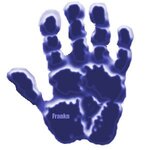BVI Hunter
Bronze Member
Is there a handheld GPS (say for hiking, geo-caching etc) that could be used to plot "finds"?
just wondered what the accuracy was - within a few feet? ten feet? or more?
thanks!!
just wondered what the accuracy was - within a few feet? ten feet? or more?
thanks!!






 ... You have to know that most of us went to school in the USA.. Is not 10 meters like 34 feet ??
... You have to know that most of us went to school in the USA.. Is not 10 meters like 34 feet ??



